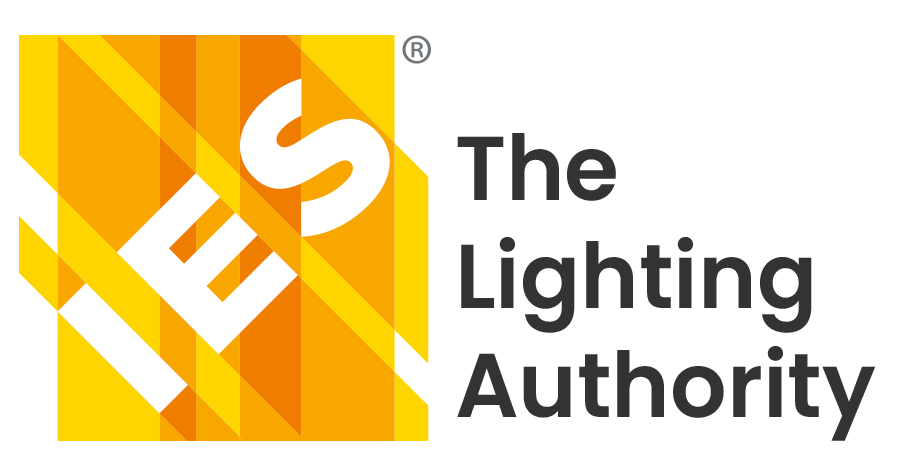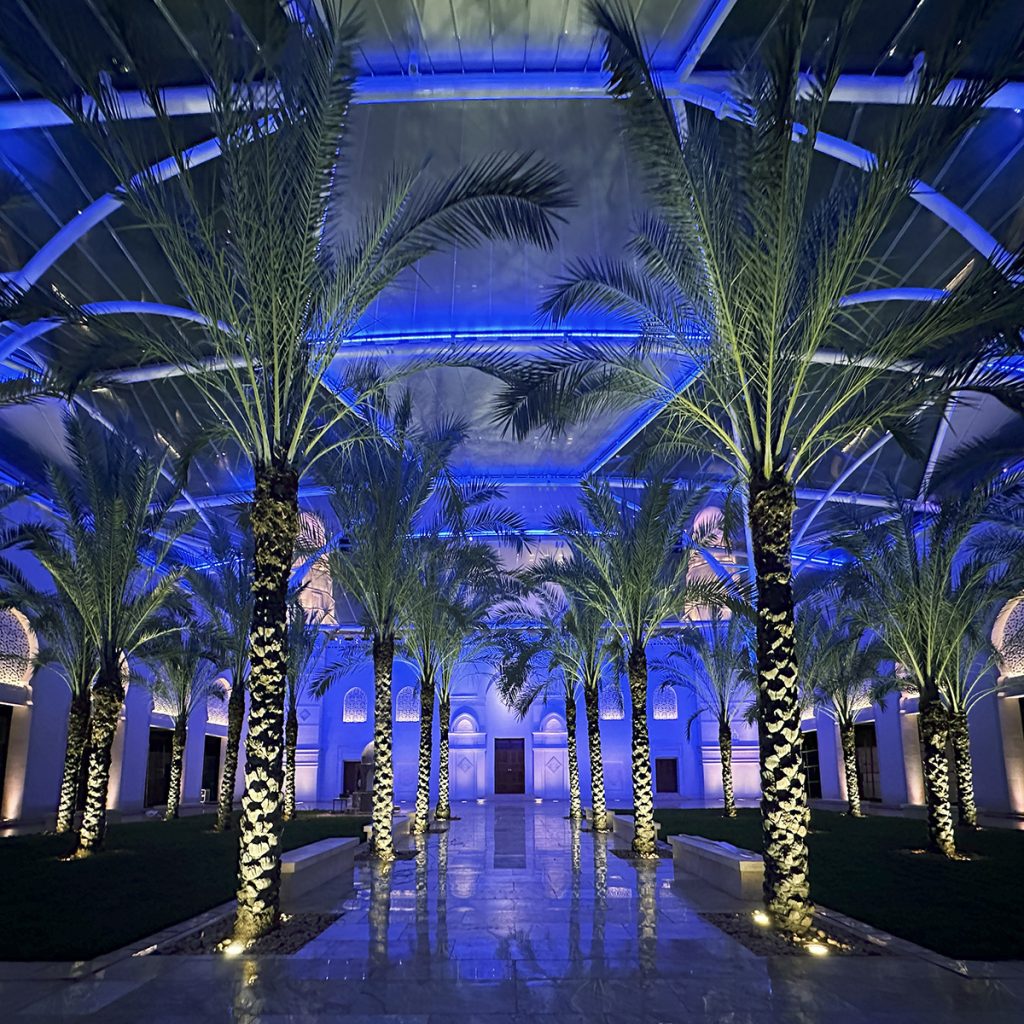A courtyard is central to Al Jamea-tus-Saifiyah University’s serenity
Al Jamea-tus-Saifiyah University’s Nairobi campus stands as a testament to the seamless integration of historical inspiration and contemporary design. Drawing from the rich architectural heritage of the 10th-century Fatimid era, the campus design incorporates verdant gardens and tranquil spaces that promote relaxation and reflection. The central courtyard, a focal point of the campus, embodies this design ethos with its serene atmosphere and carefully curated elements. In 2023, the addition of a state-of-the-art, ethylene tetrafluoroethylene (ETFE) canopy further enhanced the courtyard’s usability, providing shelter from the elements while adding a modern architectural layer to the historic setting.
The courtyard’s design echoes Fatimid-era courtyards, characterized by intricate floral motifs and a armonious blend of open space and architectural elements. Flanked by arcades and serving as an extension of the campus mosque, the area fosters a sense of spiritual connection and community. Rows of date palms and fountains further contribute to the peaceful ambiance, inviting students and visitors to pause and reflect.
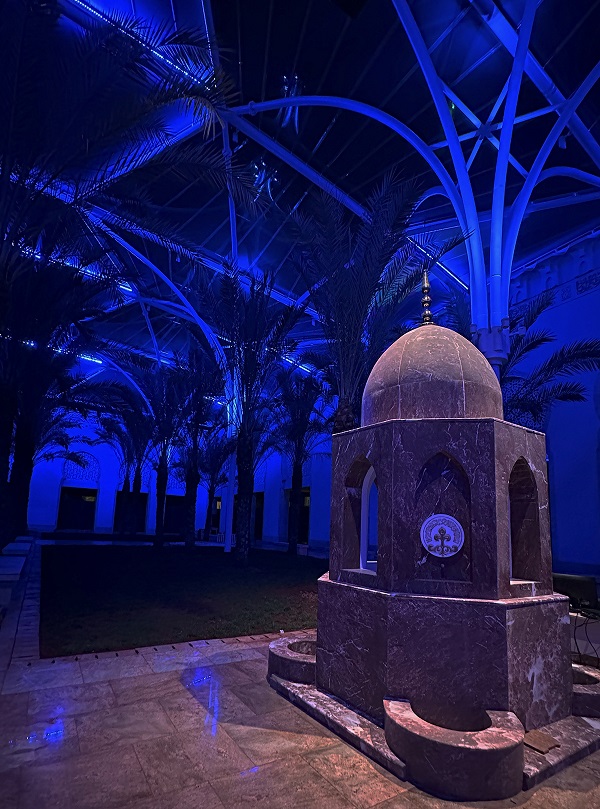
The lighting design for the area is more than just a functional consideration; it’s an orchestrated narrative that bridges traditional architecture with the modern ETFE canopy, showcasing history with modernity. The primary goal of the project was to create an environment that accentuates the courtyard’s architectural highlights; gentle use of color allows for low light levels while providing a dynamic visual contrast. Additionally, the lighting scheme addresses multiple design intents, including wayfinding, stage lighting, and nighttime security, all achieved through programmed groupings of luminaires.
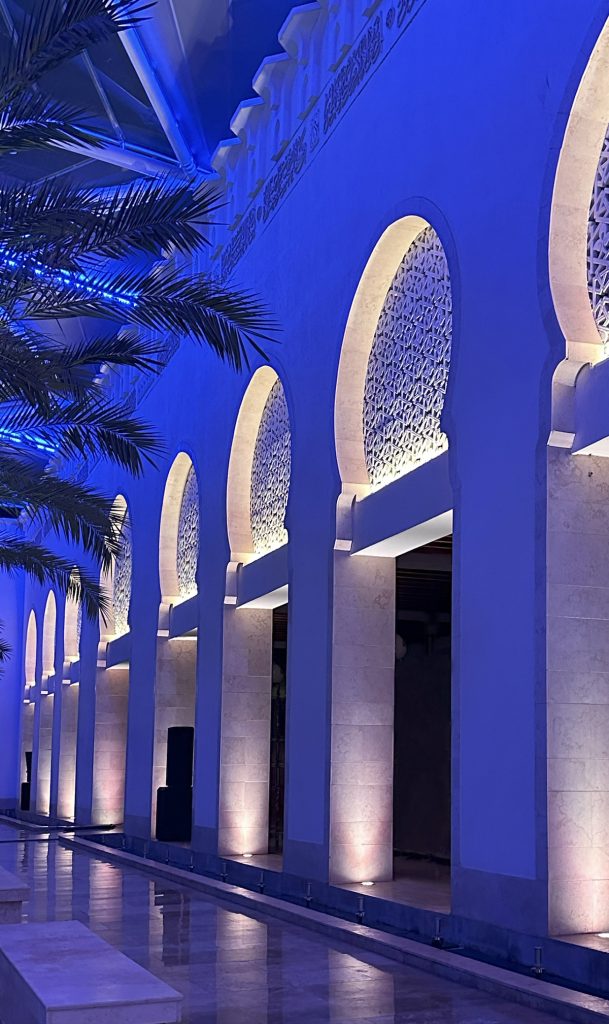
“The space needed to serve as both a sanctuary for prayer and reflection and a dynamic event venue with adaptable lighting scenes,” explained Insiya Divan, principal designer at ID Lighting Design. “We specified a highly adaptable, Ethernet based, programmable system to create complex scenes that allowed transitions between a meditative atmosphere and lighting that supported highcapacity event-focused settings.”
Sustainability and light pollution control were also essential, given the site’s proximity to a national park and wildlife reserve. To add to the design challenges, the project’s specialized lighting requirements were uncommon in the region and necessitated a hands-on approach to ensure timely procurement and adherence to budget constraints.
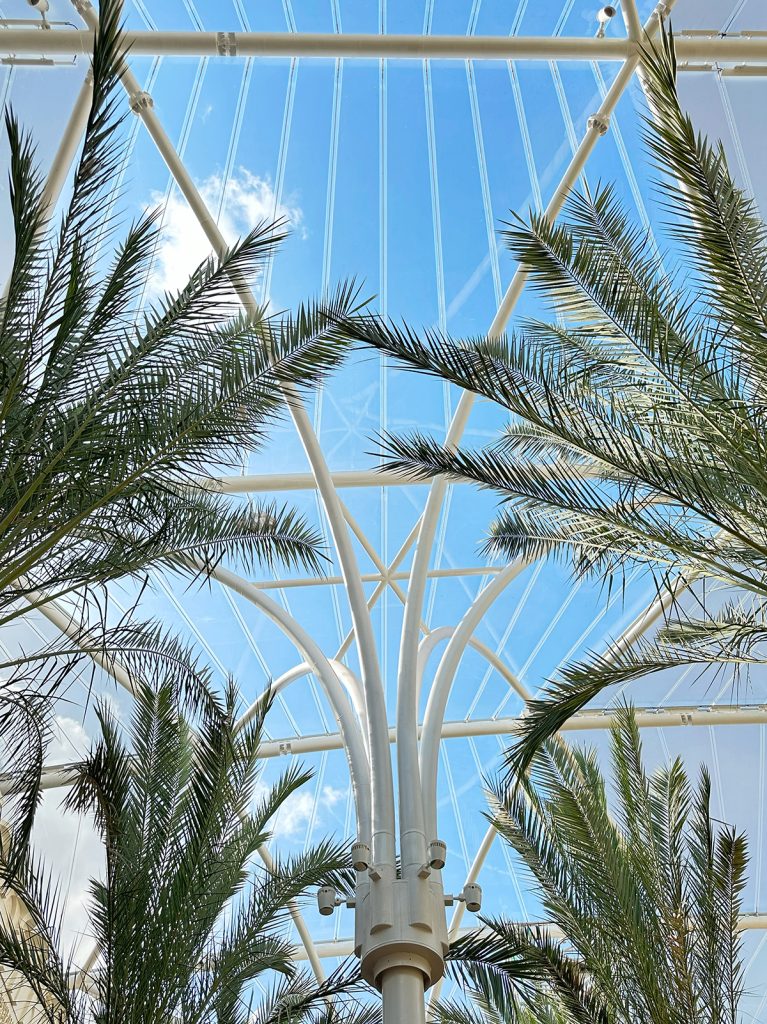
“Our design approach focused on the seamless integration and concealment of luminaires to preserve architectural integrity while enhancing both historic and modern elements, emphasizing verticality, depth, and materiality,” said Divan. For example, 8-deg, narrow-beam grazers accentuated the curvature of the steel arches, while lowprofile accent lighting highlighted intricate stone details against a backdrop of contrasting low ambient light.
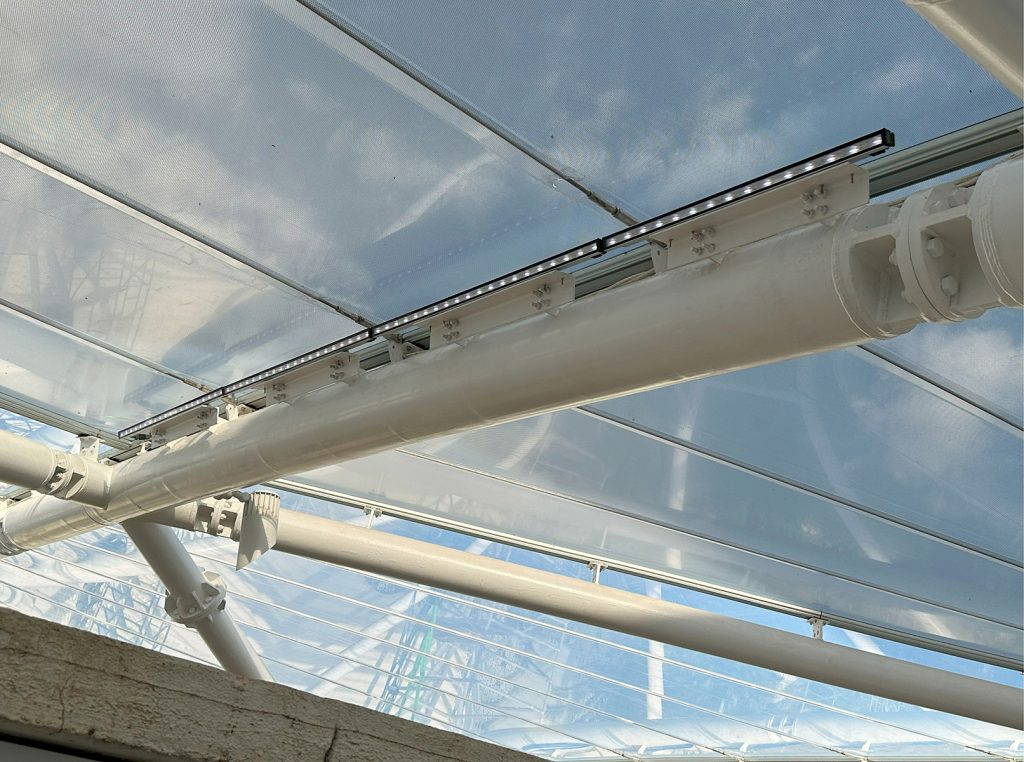
The narrow-beam grazers were also employed to cast a soft, indirect glow that highlights the canopy’s form while preventing unwanted light spill. At the base of each column-cluster, accent luminaires with an 8-deg beam angle elongated lenses, and honeycomb-louvers graze the arched steel of the column-cluster, adding depth and texture to the architectural details. Upper-luminaire shielding prevents direct light spill into the night sky. The result is a glare-free space with low ambient lighting, and special architectural elements highlighted beneath the canopy structure.
“Custom beam-mounted accent fixtures were used for highlighting key architectural elements,” Divan explained. “These fixtures featured custom edge-diffusing lenses to softly illuminate intricate stone medallions and sculptural features. In-ground and surface grazers were strategically placed within architectural recesses. These 2700K warm-white fixtures emphasized the historic façades through contrast and shadow. RGBW-A luminaires with Ethernet-based controls created addressable fixtures for dynamic programming. They enable preset scenes for daily use and synchronized lighting for performances and community events.”

Preventing Light Spill
The university proactively sets regional benchmarks for sustainability by minimizing resource waste and prioritizing renewable solutions. The exterior lighting for the translucent ETFE canopy posed a unique challenge—how to illuminate the membrane effectively without contributing to light pollution. The design incorporated rigorous optical control, shielding, and precise luminaire placement to prevent light spill. Lighting simulations were conducted and fixtures with very narrow beam optics (7 to 10 deg) and custom louvers were employed to deliver targeted illumination, reducing glare and unnecessary light dispersion. The Ethernet-based control system further enhanced efficiency by automating shut-off schedules, optimizing energy use, and preserving dark-sky conditions and environmental integrity.
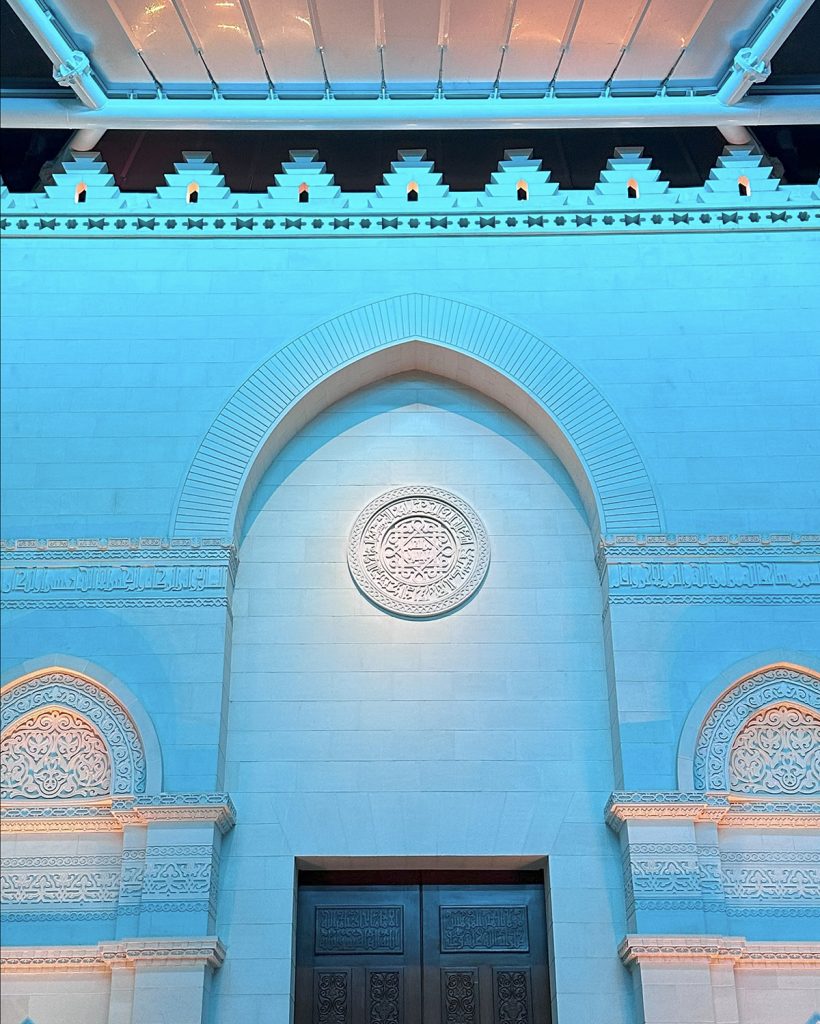
“The courtyard remains an inviting, well-lit space for quiet reflection and vibrant events, enhancing student and community engagement,” Divan shared. “Low indirect lighting at 5 to 15 lux fosters a calming environment, supporting the spiritual and meditative functions of the space. The careful layering of light brings out the depth and detail of historic stone elements, ensuring their visual prominence even at night…[and] the ability to program dynamic lighting scenes ensures that the space can adapt to different uses, from everyday student activities to large-scale events, without requiring manual intervention.

The illuminated courtyard of Al Jamea-tus-Saifiyah’s campus serves as a model for how thoughtful design can create functional and inspiring spaces, celebrating the past while embracing the future. The successful integration of historic architecture, modern technology, and sustainable design principles has created a space that will be cherished for generations to come.
THE DESIGNER |
Insiya Divan, LEED AP, IES Member, IALD, is principal designer at ID Lighting Design.
THE AUTHOR |
David Shiller is president of Lighting Solution Development, a leading business development consulting firm to the lighting industry. He is also publisher of LightNOW, an online lighting industry trade publication, as well as a 20-plus-year veteran of the lighting industry and a member of the American Lighting Association.
